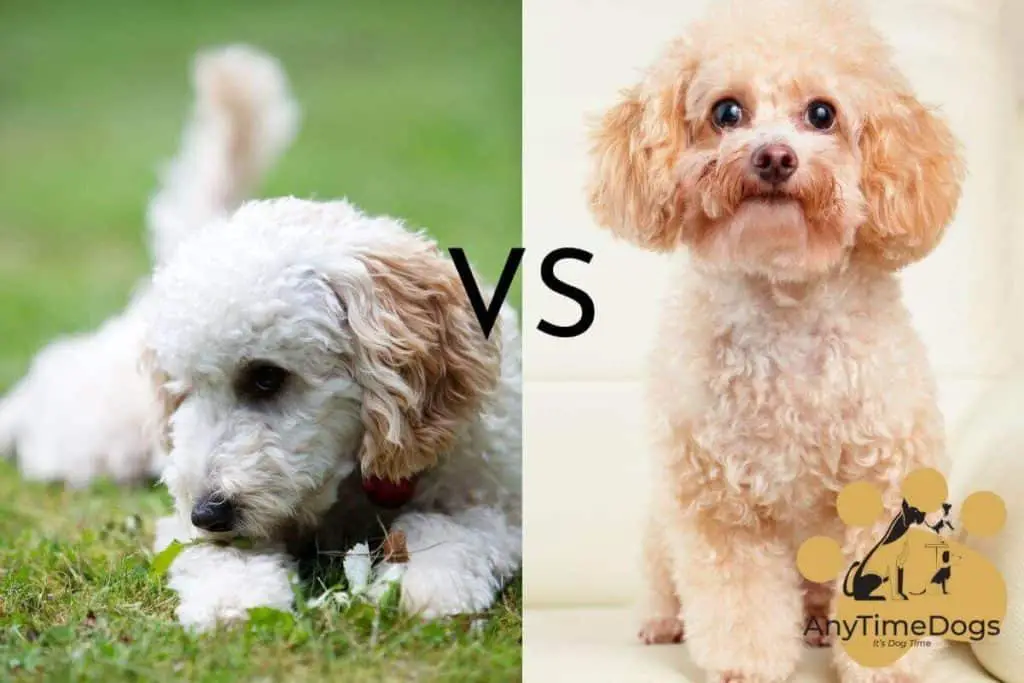Toy and Miniature Poodles are intelligent, active, and clever dogs that were originally bred for hunting purposes, but breeders later bred them for human companionship. They are known as French poodles and were originally bred in Germany.
Wondering about getting a miniature or toy poodle, but also worried about their lifespan and can’t differentiate between miniature vs toy poodle’s life span, we are here to help you decide.
Today we will look at the differences between the Toy Poodle and the Miniature Poodle. Examining what distinguishes them and what they have in common. We will assist you in determining which version of the Poodle is the best pet for you, your family, and your lifestyle.
Miniature Poodle Vs Toy Poodle: History
Miniature and toy Poodles have been around since at least the 15th century. By the 18th century, they had established themselves as the primary companion dog in Spain. They are old European breeds used for duck hunting.
Smaller Miniature Poodles became popular as companions in French royal houses beginning in the 18th century. Toy Poodles were first bred in the United States in the twentieth century as a good companion for city dwellers.
Miniature Poodle Vs Toy Poodle: Appearance
Miniature Poodles should be between 11 and 15 inches tall at the shoulder. Toy poodles are even smaller, with a maximum height of 10 inches. The only difference in appearance between these dogs is their size.
Both miniature and toy poodles have curly, dense hair that is usually solid in color. Poodles carry themselves with pride, appear alert, and are elegantly proportioned.
Miniature Poodle Vs Toy Poodle: Temperament
Toy and Miniature Poodles are energetic and intelligent dogs. They are known for their steady and calm nerves. They make excellent companions and thrive when treated as members of the family.
They are extremely people-oriented pets and can also experience separation anxiety. You should be aware that they have stronger marking and hunting drives as working dogs than many companion breeds.
Poodles are generally non-aggressive, so they get along well with other animals and children. However, Miniature Poodles may be the best choice for small children.
Miniature Poodle Vs Toy Poodle: Health
Miniature and Toy Poodles are both relatively strong little dogs. Because of a history of good breeding, these dogs live long and healthy lives. Their life expectancy ranges between 10 and 18 years.
Miniature Poodles, on the other hand, have more genetic diversity. As a result, they may be slightly healthier than their larger counterparts.
However, you should be aware that Toy Poodles are more prone to injury due to their small bones and size. Because of their size, they are more brittle.
Miniature Poodle Vs Toy Poodle: Training
Poodles are eager to please and quick learners, making them easy to train. You might believe that because these are smaller dogs, they don’t require as much training or socialization. But, this is not always the case with toy and miniature Poodles.
Poodles share special bond with their owners and do not do well alone. Socialization can be extremely beneficial in preventing separation anxiety. Because Poodles can be sensitive, you should be consistent and positive with them.
Miniature Poodle Vs Toy Poodle: Exercise
Both Toy and Miniature Poodles require daily exercise. They are easily bored due to their history as a hunting and working dogs. They have a lot of energy and enjoy being active.
Fetching games and walks with humans may benefit both poodles. They also enjoy swimming and retrieving. Still, because of their size, their exercise requirements can be different.
Miniature Poodles may require more leg stretching than Toy Poodles. Indoor play and brief outings outside may serve for the tiny Toys. However, both types of dogs will require plenty of mental stimulation.
The speed, obedience, and tracking activities mentioned earlier are beneficial to both their minds and bodies.
Miniature Poodle Vs Toy Poodle: Shedding
Miniature and Toy Poodles have a thick, curly coat that does not shed. The coat of a Poodle is constantly growing. Miniature and Toy Poodles have similar coat textures and require frequent grooming, which includes trimming every six to eight weeks.
Daily brushing with a slicker brush and a wide-toothed comb to prevent mats and tangles from forming. A neglected Poodle’s coat can lead to a variety of skin conditions and discomfort for the dog.
Miniature Poodle Vs Toy Poodle: Grooming
Poodles are a low-shedding breed, but that does not mean they require little grooming. To prevent matting near the roots, poodle coats must be brushed daily completely to the skin.
If you don’t do this, your dog’s hair may eventually need to be shaved due to it becoming too matted. This is why many Poodle owners have their dogs professionally groomed once or twice a month.
Miniature Poodle Vs Toy Poodle: Hypoallergenic
When adopting a toy or miniature poodle, choose your poodle carefully. If you have allergies and you want a hypoallergenic dog. Although, the Poodle’s infrequent shedding means that it causes fewer allergic reactions.
But, it doesn’t mean that they are truly allergy-free. Doctors recommend that if you have allergies, you expose yourself to the specific dog you want to see how you react to him.
Miniature Poodle Vs Toy Poodle: Lifespan
Poodles, both miniature and toy, have a similar life expectancy. Both breeds live an average of 12 to 14 years. The lifespan of a poodle is determined by a variety of factors, including the dog’s health, care, diet, lifestyle, and genetics.
Miniature Poodle Vs Toy Poodle: Final Thoughts
If you’re trying to decide between a Miniature and a Toy Poodle, you might want a dog that can live a lifetime with you. Both miniature and toy poodles share a lifespan of almost 15 years.
Depending on lifespan, you can either go for a miniature poodle or a toy poodle. If you want your dog to live long, you should care for their health, lifestyle, diet, and their other needs.

